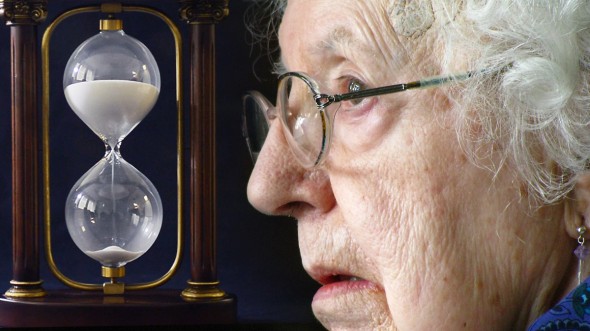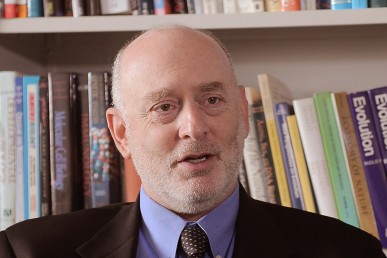Research to delay aging better investment than fighting disease

An investment in delayed aging would mean 11.7 million more healthy adults over age 65 in 2060, according to a new report from scientists at several institutions.
A new study shows that research to delay aging and the infirmities of old age would yield better health and economic returns for the population than advances in the fight against fatal diseases such as cancer or heart disease.
With even modest gains in the scientific understanding of how to slow the aging process, an additional 5 percent of adults over the age of 65 would be healthy rather than disabled every year from 2030 to 2060, according to the study in the October issue of Health Affairs.
Put another way, an investment in delayed aging would mean 11.7 million more healthy adults over age 65 in 2060.
The analysis — from scientists including UIC professor S. Jay Olshansky and researchers from University of Southern California, Harvard, Columbia and other institutions — assumes a research investment leading to a 1.25 percent reduction in the incidence of age-related diseases.
In contrast to treatments for fatal diseases, slowing the aging process would have no health returns initially, but would have significant benefits over the long term.
In the U.S., the number of people aged 65 and over is expected to more than double in the next 50 years, from 43 million in 2010 to 106 million in 2060. About 28 percent of the current over-65 population is disabled.
“Even a marginal success in slowing aging is going to have a huge impact on health and quality of life. This is a fundamentally new approach to public health that would attack the underlying risk factors for all fatal and disabling diseases,” said Olshansky, professor of epidemiology and corresponding author for the report.
“We need to begin the research now. We don’t know which mechanisms are going to work to actually delay aging, and there are probably a variety of ways this could be accomplished, but we need to decide now that this is worth pursuing.”
The study shows significantly lower and declining returns for continuing the “disease model” of research, which treats fatal diseases independently, rather than tackling the shared, underlying cause of frailty and disability: aging itself.
Lowering the incidence of cancer by 25 percent in the next few decades — in line with the most favorable historical trends — would barely improve population health over doing nothing, the analysis showed.
The same is true of heart disease, the leading cause of death worldwide. About the same number of older adults would be alive but disabled in 2060 whether researchers do nothing or continue to combat cancer and heart disease.
Earlier research showed that curing cancer completely would only increase life expectancy by about three years.
“In the last half-century, major life expectancy gains were driven by finding ways to reduce mortality from fatal diseases,” said lead author Dana Goldman, chair of the USC Schaeffer Center for Health Policy and Economics.

“This is a fundamentally new approach to public health,” says researcher S. Jay Olshansky. Photo: Joshua Clark/UIC Photo Services (click on image for larger size)
“But now, disabled life expectancy is rising faster than total life expectancy, leaving the number of years that one can expect to live in good health unchanged or diminished. If we can age more slowly, we can delay the onset and progression of many disabling diseases simultaneously.”
Several types of studies have already suggested how we might age more slowly, including studies of the genetics of “centenarians” and other long-lived people. Slowing the signs of biological aging has also been achieved in animal models, using pharmaceuticals or interventions such as caloric restriction.
But until now, no assessment has been made of the costs and health returns on developing therapies to delay aging.
“We would be affecting every generation — this study is a benchmark in the world of public health,” Olshansky said.
The study shows that major advances in cancer treatment or heart disease would extend the life expectancy of the average 51-year-old for one additional year. A modest improvement in delaying aging would double this, to two additional years — and those years would much more likely be spent in good health.
The increase in healthy years of life would have an economic benefit of approximately $7.1 trillion over the next five decades, the researchers found, even without assuming any cognitive benefits to the individual from delayed aging.
However, overall health care spending would not decline. The study showed that as advances in delaying aging allow more people to live past age 65, outlays for Medicare and Medicaid will go significantly higher despite lower medical spending per person.
“Shifting the focus of medical investment to delayed aging instead of targeting diseases individually would lead to significant gains in physical health and social engagement,” Goldman said.
“We see extremely large population health benefits, and the benefits will extend to future generations. There are major fiscal challenges, but these are manageable with reasonable policy changes, and the economic value of such a shift is too large to ignore.”
David Cutler of Harvard University, John Rowe of the Mailman School of Public Health at Columbia University, Pierre-Carl Michaud of the University of Quebec at Montreal, and Jeffrey Sullivan and Desi Peneva of Precision Health Economics are co-authors of the study.
The research was supported by the MetLife Foundation through the MetLife Foundation Silver Scholar Award, administered by the Alliance for Aging Research. Additional support came from the Ellison Medical Foundation and the American Federation for Aging Research. The development of the Future Elderly Model was supported by the National Institute of Aging and the MacArthur Research Network on an Aging Society.
